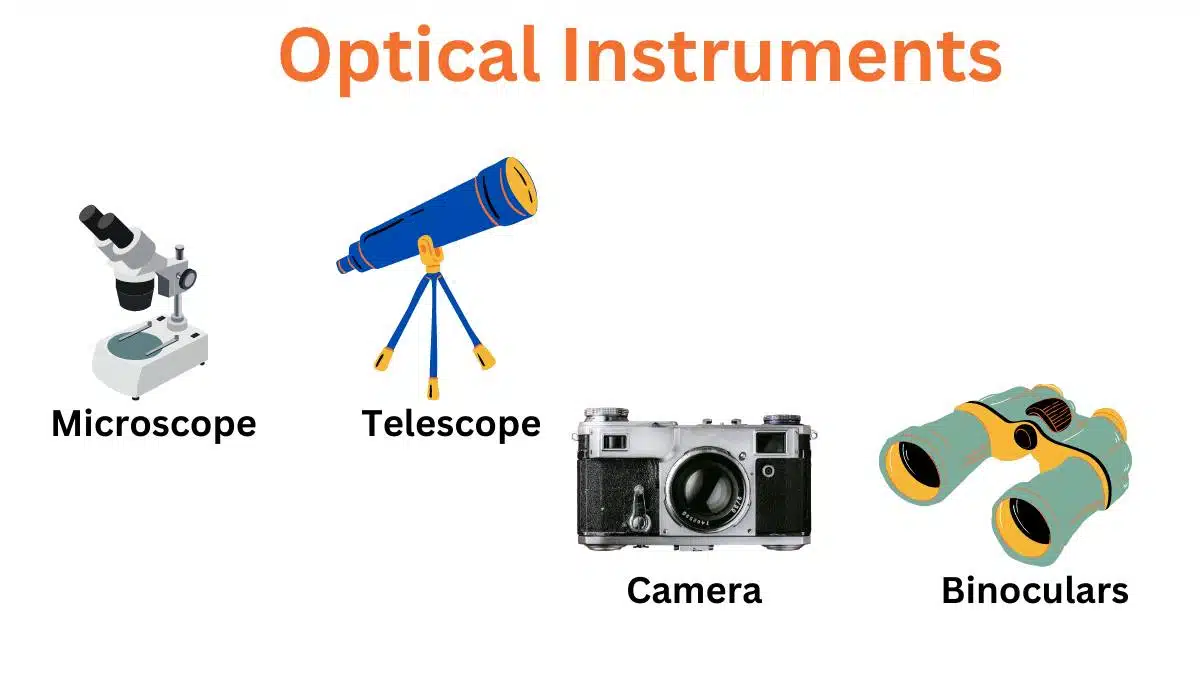Refracting Telescope- History, Components, And Applications
Refracting telescope is a type of optical telescope that use lenses to gather and focus light. They use two lenses, an objective lens, and an eyepiece. The objective lens collects the incoming light and forms an image. The eyepiece lens magnified the image for the observer.
One key advantage of refracting telescopes is their simplicity in design. They have a straightforward setup and are very easy to use. They provide clear and sharp images with high contrast. It makes them ideal for observing objects in our solar system, such as planets, moons, and stars.
What is Refracting Telescope?
Refracting telescopes also known as dioptric telescopes are optical instruments that utilize lenses to gather and focus light. It enables us to observe distant objects in the sky. Refrecting telescope work on the principle of refraction which involves the bending of light as it passes through different mediums.
Refracting telescopes consist of two primary optical components:
- the objective lens
- the eyepiece
The objective lens collects light and brings it to a focal point forming an image. The eyepiece magnifies this image and allows us to observe it with our eyes.
The History of Refracting Telescopes
The credit for inventing the refracting telescope is often given to Dutch mathematician and astronomer Hans Lippershey. It was Galileo Galilei who made significant advancements and discoveries using the telescope in the early 17th century.
Astronomers encountered challenges such as chromatic aberration which caused color fringing around objects as refracting telescopes evolved. This issue was gradually addressed through the development of achromatic and apochromatic lenses.
Numerous astronomers made contributions to the field of refracting telescopes. Johannes Kepler who devised the Keplerian telescope and Sir Isaac Newton who introduced the reflecting telescope as an alternative to refractors.
Components of a Refracting Telescope
A refracting telescope consists of several crucial components that work together to deliver clear and detailed celestial observations.

Objective Lens
The objective lens is the primary lens of the telescope. it is responsible for gathering and focusing light. It determines the telescope’s light-gathering ability and influences its overall performance.
Eyepiece
The eyepiece is positioned near the focal point of the objective lens. It magnifies the image formed by the objective. It allows astronomers to observe celestial objects with greater detail and clarity.
Diagonal Mirror
The diagonal mirror is placed between the objective lens and the eyepiece. It redirects the light path and enables a comfortable view at various angles.
Mount and Tripod
Refracting telescopes are typically mounted on sturdy tripods or equatorial mounts, providing stability and ease of movement for tracking celestial objects.
Optical Principles in Refracting Telescopes
Refraction
Refracting telescopes rely on the phenomenon of refraction where light bends as it passes from one medium to another. The objective lens refracts the incoming light and converges it to a focal point to form an image.
Chromatic Aberration
Chromatic aberration is a common issue in early refractors. It causes color fringing around objects due to the different wavelengths of light refracting at slightly different angles. Achromatic and apochromatic lenses were developed to minimize this effect.
Aperture and Light Gathering
The size of the objective lens is often referred to as the telescope’s aperture. It determines its light-gathering capability. A larger aperture allows more light to enter the telescope, resulting in brighter and more detailed observations.
Types of Refracting Telescopes
Achromatic Refractors
Achromatic refractors are the most common type of refracting telescope. They use a combination of two lenses, an objective lens, and an eyepiece, to correct chromatic aberration and provide satisfactory image quality for amateur astronomers.
Apochromatic Refractors
Apochromatic refractors employ special lenses that reduce chromatic aberration to an even greater extent than achromatic refractors. They deliver high-quality images with minimal color fringing, making them popular among serious astrophotographers and professionals.
Refracting Telescopes for Amateur Astronomers
Refracting telescopes are an excellent choice for amateur astronomers due to their ease of use, low maintenance requirements, and good overall performance. They provide a convenient and affordable entry point into stargazing and celestial exploration.
Advantages and Limitations of Refracting Telescopes
Advantages of Refracting Telescopes
- Excellent for observing terrestrial and celestial objects
- Less maintenance compared to reflecting telescopes
- Compact and portable
- Suitable for beginners and casual observers
Limitations of Refracting Telescopes
- Chromatic aberration in some designs
- Limited aperture size and light-gathering capability
- Expensive for larger apertures compared to reflectors
Maintenance and Care of Refracting Telescopes
Cleaning the Lenses
It is essential to keep the lenses of a refracting telescope clean to maintain optimal performance. Follow the manufacturer’s instructions and use appropriate cleaning tools to ensure clear and unobstructed views.
Collimation
Regular collimation is necessary to align the optical components of the telescope. This ensures that the light path is precise and results in sharp and accurate observations.
Storage and Transportation Tips
When not in use, store your refracting telescope in a clean and dry environment. Avoid exposing it to extreme temperatures or sudden temperature changes. During transportation, secure the telescope properly to prevent any damage.
Famous Observatories and Their Refracting Telescopes
Yerkes Observatory
Yerkes Observatory is located in Wisconsin, United States. It houses the largest refracting telescope ever constructed with a massive 40-inch (1 meter) objective lens. This historic instrument has contributed significantly to astronomical research and education.
Lick Observatory
Situated atop Mount Hamilton in California, Lick Observatory boasts a 36-inch (0.91-meter) refracting telescope. This iconic telescope has played a vital role in various astronomical studies, including planetary observations and the search for exoplanets.
Lowell Observatory
Lowell Observatory in Arizona is renowned for its 24-inch (0.61-meter) Clark Refracting Telescope. This instrument has been pivotal in the discovery and study of Pluto as well as providing valuable data on Mars and other celestial bodies.
Applications of Refracting Telescopes
Scientific Research
Refracting telescopes continue to serve as indispensable tools for scientific research. They aid in studying distant galaxies, identifying celestial phenomena, and advancing our understanding of the universe’s fundamental principles.
Amateur Astronomy
Refracting telescopes are widely embraced by amateur astronomers, providing them with the opportunity to explore the night sky from their backyards. These instruments allow enthusiasts to observe planets, stars, and other celestial wonders up close.
Education and Outreach
Refracting telescopes play a crucial role in inspiring curiosity and interest in astronomy among students and the general public. They serve as powerful educational tools, enabling hands-on learning and fostering a sense of wonder about the cosmos.
The Future of Refracting Telescopes
Technological Advancements
Advancements in optics and materials science continue to enhance the performance of refracting telescopes. Future developments may focus on reducing chromatic aberration, increasing aperture sizes, and improving lens coatings for enhanced image quality.
Space-Based Refracting Telescopes
The launch of space-based refracting telescopes opens up new frontiers in astronomical exploration. Free from the constraints of Earth’s atmosphere, these instruments can provide unprecedented views of the universe, undistorted by atmospheric effects.
Related FAQs
Which is a refracting telescope?
A refracting telescope is a type of telescope that uses lenses to gather and focus light to form an image.
What are refracting telescopes best used for?
Refracting telescopes are best used for observing celestial objects such as the Moon, planets, and stars. They are particularly effective for observing bright objects and producing high-contrast images.
What is a refracting telescope and how does it work?
A refracting telescope works by using a combination of lenses to bend or refract light. The objective lens at the front of the telescope collects and focuses light, while the eyepiece lens magnifies the image for viewing.







Leave a Reply